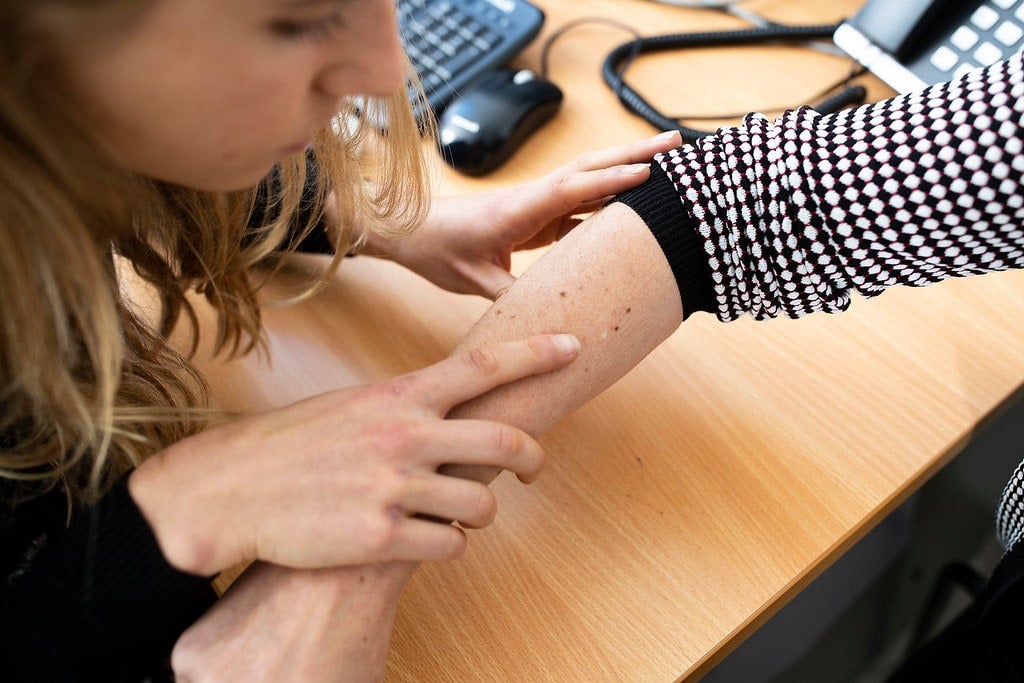Blog
Think treating skin cancer is always easy? Think again.
20 November 2014

As a dermatologist, I'm often confronted with the difficult task of telling my patients they have skin cancer. It's not an easy conversation to have and it becomes more difficult once I start talking to them about the reality of treatment.
Australians tend to believe that skin cancer isn't a serious disease. Our laid-back attitude encourages us to believe that it will all be okay, it won't happen to us and if it does, a cancerous spot or mole can simply be cut out, right?
We should feel lucky to live in a country that is at the forefront of skin cancer detection and treatment. But too often my patients tell me they wish they had known when they were younger just how common skin cancer was and that it wasn't always a case of simply slicing or dicing your way out of a potentially deadly situation.
Two in three Australians will be diagnosed with skin cancer in their lifetime. So what impact does that really have on our health and well-being? This year for National Skin Cancer Action Week we are focusing on the individual stories of people who have experienced skin cancer first hand.
I hope that through sharing my story and adding a dermatologist's perspective, more Australians will understand what's actually involved in skin cancer treatment and realise what's at risk when they fail to protect themselves in the sun.
Firstly, effective skin cancer treatment depends on foresight - the ability to notice that something isn't right with your skin. It might be a red, scaly, crusted or bleeding spot or a painful or itchy patch that won't go away. The first step is taking the time out of your busy day to go to your GP and get your skin checked out.
Even for less deadly sunspots like solar keratoses, the early stages of skin cancer treatment often involve expensive creams. However, if things aren't that easy, a biopsy is generally the next step.
I've seen too many of my patients sweat over biopsy results - it's an emotional exercise and it's easy to worry about the worst case scenario - a potentially deadly malignant melanoma. I've watched many people lose sleep while waiting for results and lots of nervous energy is expended, not to mention the costs involved. Expenses don't stop at doctor visits and biopsy costs; my patients have to take time off work too.
Once a skin cancer is formally diagnosed, only then can treatment discussions begin.
For more common skin cancers such as superficial basal cell carcinoma (sBCC), there are options other than surgery. However, these alternatives are often uglier, more painful or expensive than you might expect. It usually comes down to a cream which must be applied five nights per week for six weeks, causing a red crusty reaction, a bit like a healing cold sore. It's not much fun.
Then there's PDT - photodynamic therapy. A cream is applied to sensitise the cancer cells to light emitted from a specific source. It's an extremely painful and costly half-day procedure that needs to be repeated in one week.
For some skin cancers such as melanoma, there is a gold standard of treatment - cut it out! But is it as simple as it sounds?
Make no mistake, getting a melanoma removed is not a pleasant experience. Again, it involves time, money and anxiety. After a local anesthetic is injected, the skin cancer is cut out and sent to the lab for a final analysis. The pathologist checks that it is the type of skin cancer your doctor thought it was, and that all the cancer has been removed. They also check that the cancer cells had not wrapped themselves in and around small skin blood vessels and nerves.
Usually this results in stitches for five to ten days depending on the site, usually in two layers. You can't do vigorous exercise or weight lifting for weeks afterwards. Months later a thick itchy pink scar (keloid) can develop, or even an ugly stretched scar.
But what if the biopsy reveals a malignant melanoma? Often extra tissue is cut out as "insurance", leaving a large area of missing skin and depending on the thickness of the cancer, your doctor will need to check if the melanoma has spread to your lymph nodes or other organs in the body.
It doesn't end there. After that, comes the stress of blood tests, chest x-rays and body scans. In cases where the melanoma has spread, chemotherapy and radiotherapy may be prescribed.
It's a grim reality, but unfortunately treatment is not always successful. More than 2000 Australians die of skin cancer each year.
Don't be fooled - get ridding of a skin cancer isn't always as easy as you might imagine. There's a lot at stake. Please, think twice before you ditch the sunscreen or consider sunbaking.
From early childhood we've learnt that Australians have the highest rate of skin cancer in the world and that excessive sun exposure leads to skin cancer. There is no such thing as a healthy tan and prevention is the key. Slip, Slop, Slap, Seek and Slide now, to avoid visiting me in the future.
Tags
